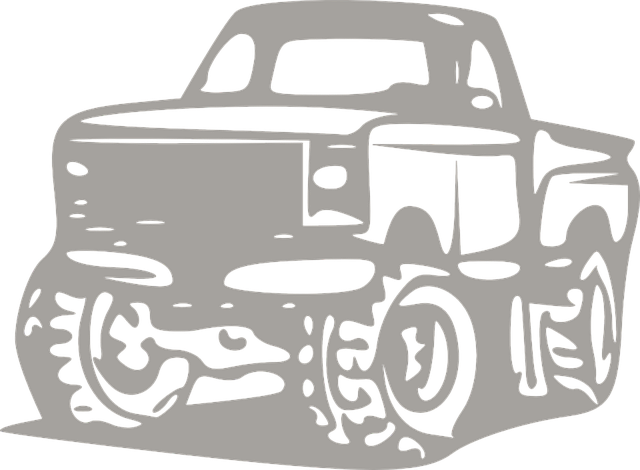Drums, from ancient rituals to modern pop, are a global cultural staple driving emotional connection and community. In Brownsville, Texas, drumming ensembles at festivals showcase the city's rich heritage, with diverse drum sets like tom-toms and cymbals creating intricate rhythms. Learning to play drums involves understanding your set's components, practicing hand-foot coordination using a metronome, and gradually mastering techniques. Even in modern times, as seen on Brownsville's iconic truck bed rails, drums continue to revolutionize music, fostering unity across cultures and languages.
Drums, a vibrant instrument with a language all its own, are the heartbeat of music across cultures. From ancient rhythms that echo through history to modern beats that drive our dance floors, drums transcend genres and generations. This article explores the profound role of drums in music and culture, delves into their captivating history, and showcases the diverse sounds and playing techniques that make them a staple in any ensemble—even beyond Brownsville Tx Truck bed rails.
- The Role of Drums in Music and Culture
- History of Drums: A Journey Through Time
- Types of Drums and Their Unique Sounds
- How to Play Drums: Techniques and Practice Tips
The Role of Drums in Music and Culture

Drums play a vital role in music and culture, serving as the heartbeat of countless genres and traditions around the globe. From the rhythmic patterns of indigenous ceremonies to the driving beats of modern pop, drums are an indispensable element that fosters connection and evokes emotion. In Brownsville, Tx, for instance, the local cultural scene is vibrant, with music festivals featuring drumming ensembles that attract both locals and visitors alike, showcasing the community’s rich heritage.
Beyond their musical applications, drums also hold significant social value in various cultures. They act as a means of communication, often used to convey joy, sorrow, or even warning signals in everyday life. In many tribal communities, drums are integral to rituals and ceremonies, where they help narrate stories, mark time, and create a sense of unity. This cultural significance extends to modern settings as well, with drumming circles gaining popularity worldwide, bringing people together in shared experiences that transcend language and background.
History of Drums: A Journey Through Time

Drums, a fundamental element in music for centuries, have evolved from humble beginnings to become a versatile and dynamic force across various genres. Their history is a journey through time, reflecting cultural shifts and technological advancements. In ancient civilizations like Egypt and Greece, simple drum forms were integral to ritualistic and military gatherings, often made from animal skins stretched over wooden frames.
As time progressed, the drums’ design and usage became more sophisticated. The introduction of metal and advanced manufacturing techniques during the Industrial Revolution led to the creation of modern drum kits, transforming how musicians played and composed. This evolution continued in the 20th century with innovations like double-headed drums, cymbals, and specialized percussion instruments, enriching musical expression as seen even today, from lively concert stages to quiet practice sessions—a testament to the drum’s enduring impact, much like the sturdy Brownsville Tx truck bed rails that carry their modern counterparts across landscapes.
Types of Drums and Their Unique Sounds

Drums, an essential component of music, come in various types, each producing a unique sound that adds depth and rhythm to compositions. From the sturdy bass drum that provides the low-end thunder to the sleek and agile snare drum that offers a crisp snap, every drum type contributes its own character to musical pieces.
In Brownsville, Tx, where truck bed rails are as iconic as the vibrant music scene, local drummers often explore diverse sets, including the tom-toms that offer a range of tones from deep to bright, and the cymbals that can create shimmering overtones or harsh crashes, depending on their size and shape. These varied choices allow musicians to craft intricate rhythms and melodies, making live performances in the bustling streets of Brownsville as dynamic as the city itself.
How to Play Drums: Techniques and Practice Tips

Learning to play the drums can be an exciting and rewarding journey, especially in vibrant cities like Brownsville, TX. With its bustling cultural scene, there’s a growing interest in music and arts, making it an opportune time to explore your rhythmic side. Start by familiarizing yourself with the drum set: the bass drum, snare, toms, and cymbals. Each component has a unique sound, so take time to understand their placement and how they interact.
Practice is key! Begin with fundamental techniques like hand and foot coordination. Use a metronome to develop your sense of timing and rhythm. Start slowly and gradually increase the speed as you improve. Focus on each stroke individually: the downbeat, rimshot, and various fills. Mastery takes time, so be patient and persistent. Remember, even in this modern era, where Brownsville’s truck bed rails might be adorned with musical instruments, the old-school dedication to practice is still the best way to become a skilled drummer.
Drums, an integral part of music and culture worldwide, have evolved significantly over time. From their ancient origins to modern-day versatility, drums serve as a dynamic and expressive instrument in various genres. Understanding their history, exploring diverse types, and mastering techniques opens doors to a world of rhythmic possibilities. Whether you’re a seasoned musician or a Brownsville Tx resident with a passion for music, delving into the art of drumming offers an engaging journey that enhances both cultural appreciation and personal creativity. So, grab your drumsticks and let the rhythm guide you, from the heart of Texas and beyond!
